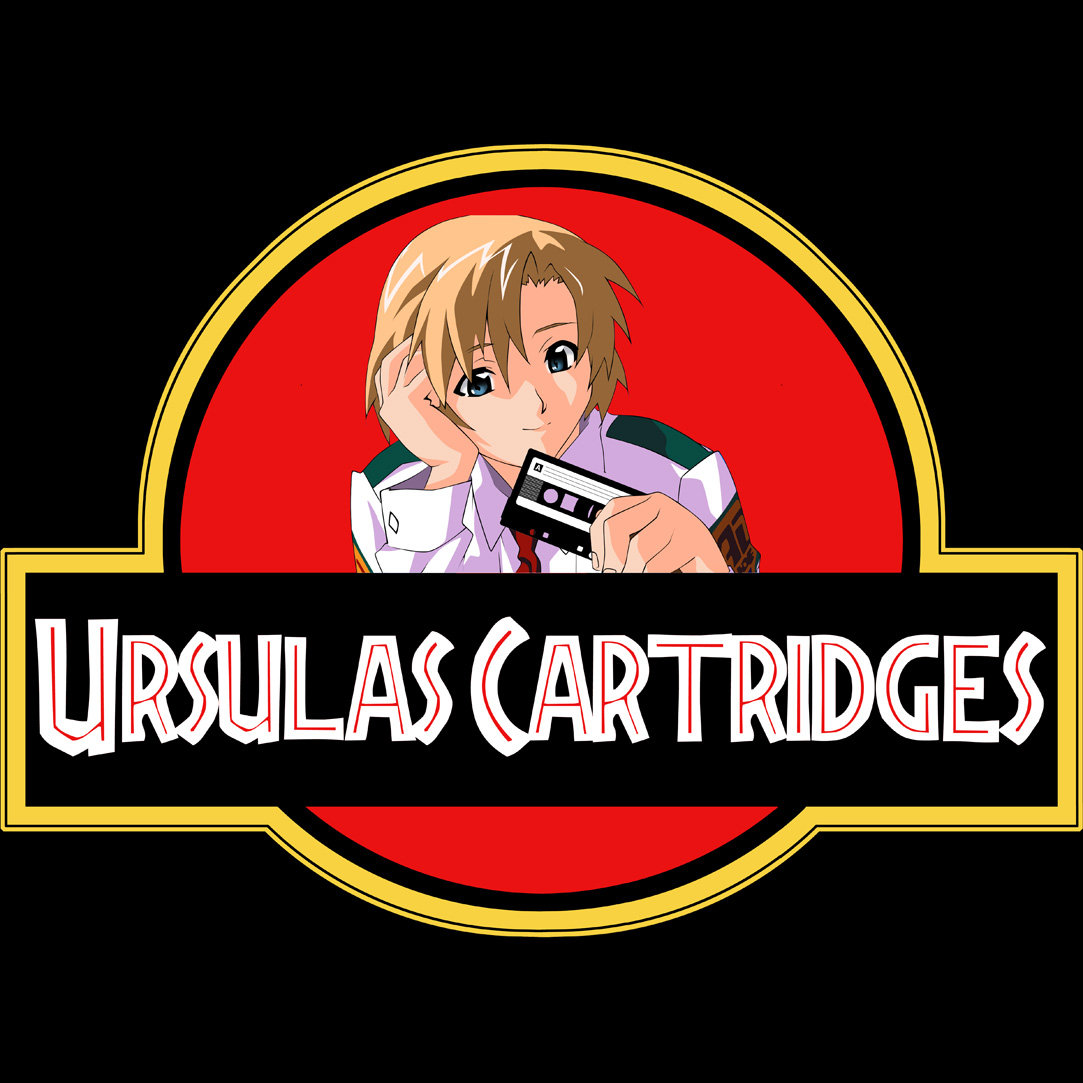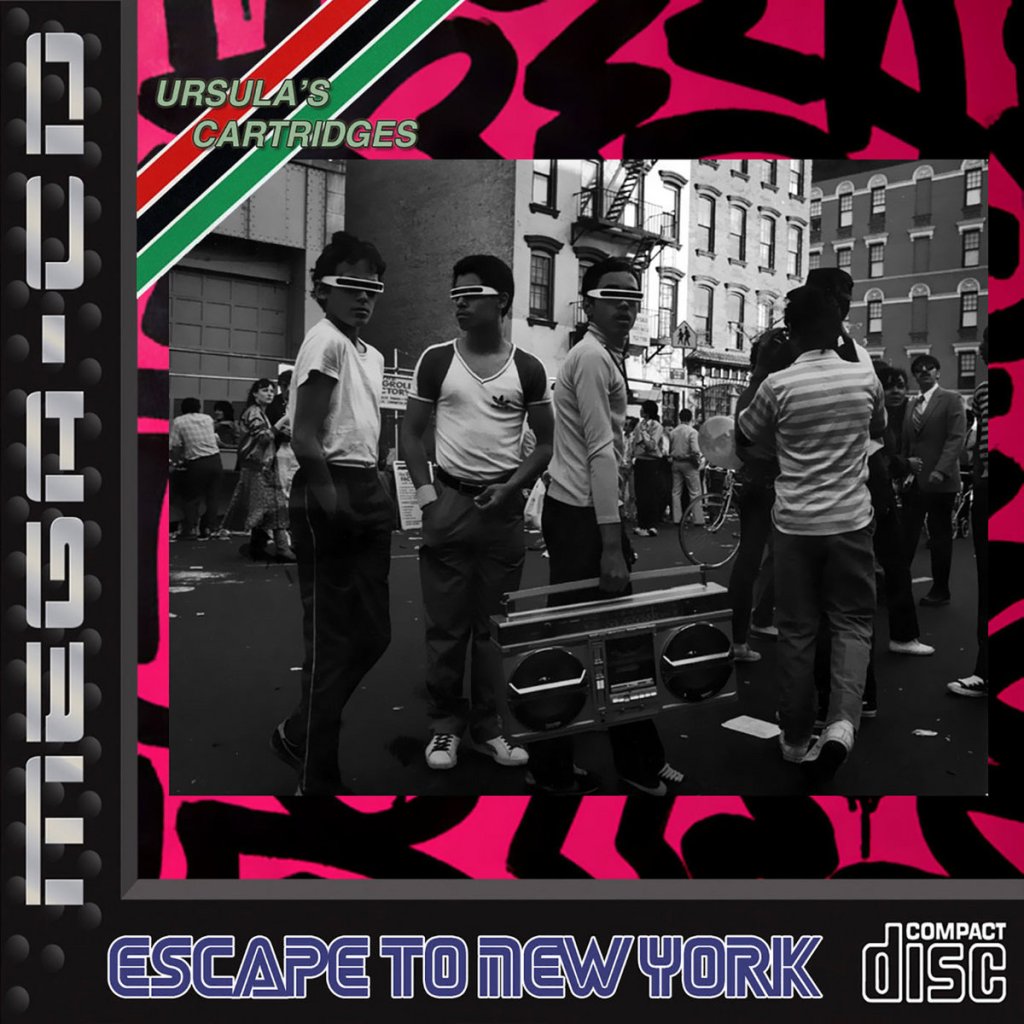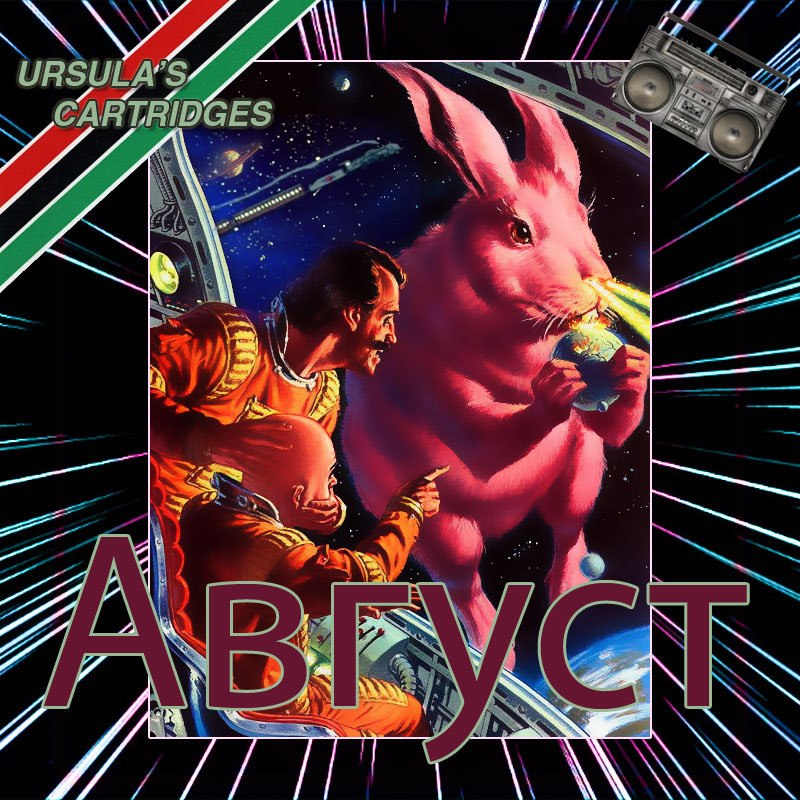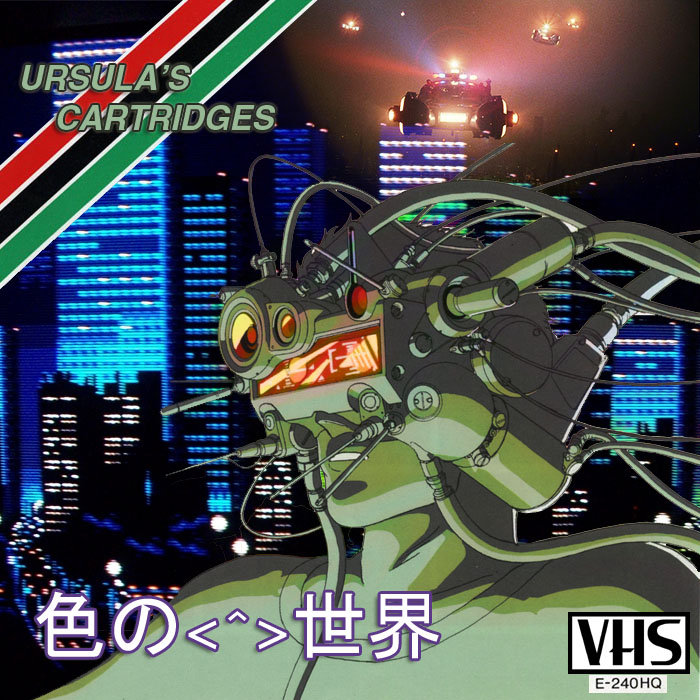
All images courtesy of Pekka Lavia

A handful of years ago, I fully immersed myself in the Vaporwave scene. One of the first Vaporwave records I ever bought was Escape to New York by Ursula’s Cartridges. Since then, Ursula’s Cartridges has become a staple of my Vaporwave listening sessions. When I had an opportunity to interview Pekka Lavia, the individual behind this fantastic project, I jumped at the chance. Today Pekka and I discuss how Vaporwave is really made, where he obtained the idea for his killer logo, the details on the creation of Escape From New York, and so much more. Check out Ursula’s Cartridges here.
Joe:
What have you been up to the past year, considering the current circumstances of the world?
Pekka:
COVID has kept me inside my house for a long time. It has messed up some of the future projects that I had in mind. Fortunately, I have been healthy and have managed to keep my finances steady. Being inside the house can be very dull. I miss going outside with friends, but that hasn’t stopped me from creating music. Finnish winters are also long and cold. The most energy-draining thing on this side of the planet is the dark period of the polar night. Thank goodness we are finally approaching spring!
Joe:
What was your segue into music? How did you get started making the music you make today?
Pekka:
I’ve always paid attention to music. Since my early childhood, I have focused on music and sound effects. It didn’t matter if the music was from the video games I was playing or cartoons I was watching. My brother used to record loads of early 90s rave music to compact cassette tapes. He would also record videos from MTV to VHS tapes and occasionally buy some vinyl singles. Artists such as Altern-8, The Prodigy, Isotonik, and L.A. Style became a massive part of my early childhood.
In 2001, I had this crazy idea to get a music-making program for my 13th birthday gift. I ended up creating music on eJay’s Techno DAW. A couple of years later, I started producing music on FL Studio, and I’ve been using it ever since.
When I started my Vaporwave project in 2014, it was an experimental inside joke. The main idea was to quickly make a Vaporwave album and have a laugh with the lads. Eventually, I came to my senses. Ambition got the best of me, and I decided I wanted to take the project more seriously. I had some ideas where I could take it going forward. After the first album, my main focus was to come out of my “safety bubble.” I wanted to challenge myself by trying new musical styles and concepts for each album.
It has often been said that Vaporwave is merely about slowing down a sample of someone else’s song, adding some reverb, and calling it a day. My method is to add my stuff to the mix. I may add some original synths, program drums, add effects, manipulate samples, choose the tempo, create melodies, and so on. In the end, my own “footprint” is added to the music. Making music this way gives me good ideas for future compositions. Sampling is an art form, and it should be appreciated as such.
Joe:
It has always seemed in the Vaporwave, Synthwave, Lofi, and Chillwave scenes that the visuals were just as important as the music. What are your thoughts on this?
Pekka:
I prefer a music-first and art-second approach. It has been said that compelling album artwork will provide more interest to the actual music. It seems rather unfortunate for that always to be the case. But hey, that’s how the cookie crumbles.
Joe:
Piggybacking on my last question, I love your moniker. I suppose that, in part, it pays homage to the Jurassic Park symbol. How did you come to use that visual tag? Did you design it yourself or work with a particular artist? I know many artists in the scene dabble with graphic design.
Pekka:
The current logo happened when I got tired of my earlier logo. The old one had the red, black, and green lines taken from the Fuji E-240 video cassette’s cardboard front art. I found the anime character from the tv series Bubblegum Crisis Tokyo 2040. I had this idea that the character would be inside the Jurassic Park logo while holding a cassette tape. Jurassic Park is one of my favorite movies of all time. I usually do my artwork, but I’m open to others making art for a release. I always embrace suggestions, especially if I’m collaborating with anyone.

Joe:
Escape to New York is a total classic. Can you tell me a little about what went into making that album?
Pekka:
Right when I was finishing my album Argentavis, I had an idea to make a Future Funk album. It was not long before the project became something else entirely. I ended up deciding to make a concept album about New York City. I tried to sample music that gave me 70s and 80s New York vibes. When the album was completed, I was happy with how it flowed. I ended up adding a couple of bonus tracks for shits and giggles. The album title takes its name from John Carpenter’s 1981 movie Escape From New York. While the movie was about leaving New York, my album was about going to the city. I am very grateful that people enjoy the album so much. I don’t see the album as my magnum opus, to be completely honest. My goal is to keep on making music for as long as I possibly can. If I stay idle for too long, I fear I might lose my spark. I have never personally visited New York, but I’d like to someday.
Joe:
How do you think your sound and approach to making music have changed over the years?
Pekka:
My music has definitely changed throughout the years. It’s no longer vaporwave in its truest form as it was back in 2014. My main inspiration has been to make music with 70s-90s era vibes and sounds. Many events of cultural significance happened during those decades, and I’m not done digging that hole yet.
Joe:
Why do you think scenes such as Synthwave and Vaporwave have embraced so many different musical formats such as CDs, cassettes, records, mini-discs, CDs, VHS, floppy disks, USB drives, etc. What are the positives and negatives of the importance physical music has had to these scenes and indie music in general?
Pekka:
Everyone’s main goal seems to be having their music released in a physical form, especially vinyl. It’s exhilarating to have a work of your music released in a physical format. Records and other physical formats should not be used as a mere status symbol that signifies you have ”made it.” The music itself should always come first. The most problematic issue with physical releases is people who hoard them and resell them online with a much heftier price tag. Another occasional issue is some labels not delivering on their advertised physicals. Major bummer, but these things can happen.
Joe:
Here at Vinyl Writer Music, we love all musical formats; however, vinyl is undoubtedly our favorite. It was exciting to have My Pet Flamingo issue Escape to New York on vinyl. As far as I know, you have had no other releases available on vinyl yet? Are there any plans for other projects to be released in that format in the future? If not, what album would you like to see released on vinyl, given a chance?
Pekka:
I would love to see more of my releases in the vinyl format. It would be amazing to have all of them on vinyl one day. So far, only My Pet Flamingo has approached me to release my music on vinyl. If any label out there wants to release one of my albums on vinyl, I’m always all ears. Although, COVID has had a significant impact on music labels financially. I’m sure that has only made it more challenging to release physical music. After all, records are a much bigger monetary commitment than tapes or CDs.
Joe:
Where do you see Ursula’s Cartridges going in the future? Any new projects or songs that might be coming out soon?
Pekka:
I am currently working on two albums. The first one will take inspiration from the early 90s rave scene. I’m trying to release it simultaneously with an EP that will also include rave-related aesthetics. My second album will be a soundtrack to an imaginative and nonexistent spaceship shooter. I also have a collab EP in the works. I’m not sure what the plan will be after finishing those two albums. I may focus on some of the Techno material that I have been doing now and then. I hope to finally finish albums for my Begga(R) and Bizarre Myceté Forêt projects. I have also tasked myself with checking out all the tapes I have from my childhood. I want to archive some essentials for other possible music material digitally. VHS Head’s Persistence of Vision album made such an impression on me. I was then inspired to play around with old VHS tapes and create an analog experiment. If the pandemic improves, I might try doing some live stuff. So far, Ursula’s Cartridges has become my most successful musical project. I am very grateful that people have supported this silly project of mine. I am not worthy!

Interested in learning more about the artistry of Ursula’s Cartridges? Check out the link below:
Dig this interview? Check out the full archives of Records, Roots & Ramblings, by Joe O’Brien, here: https://vwmusicrocks.com/records-roots-ramblings-archives/
